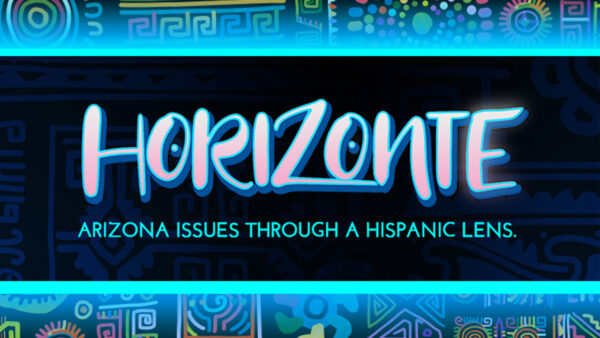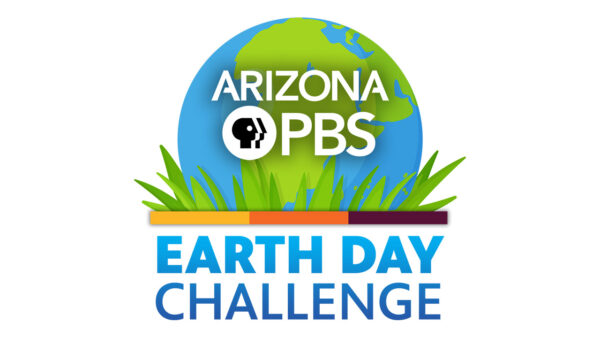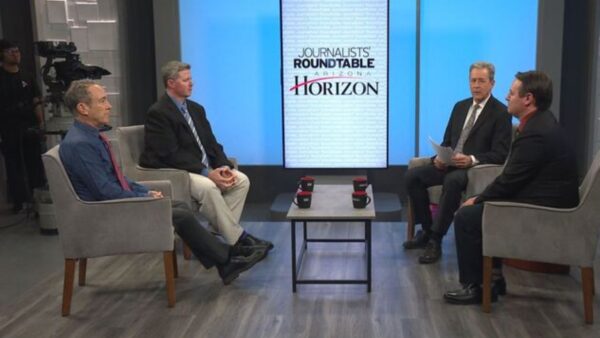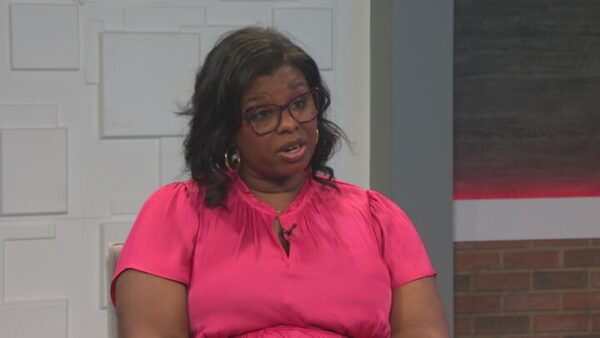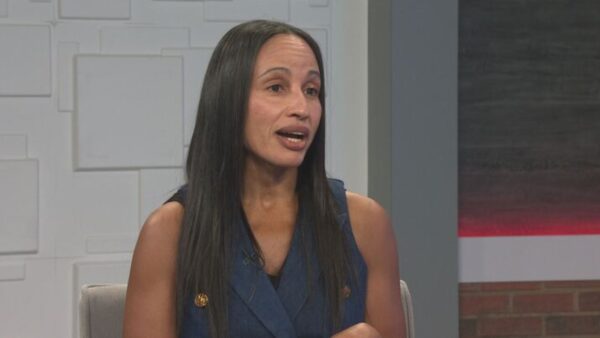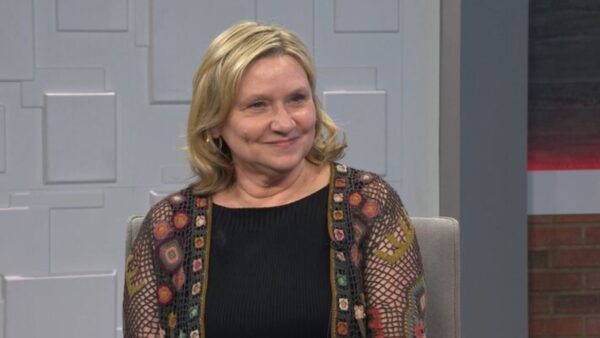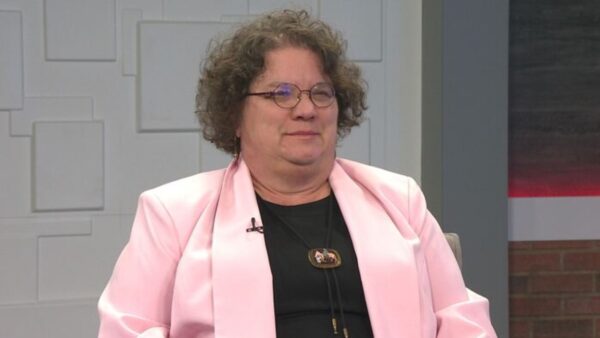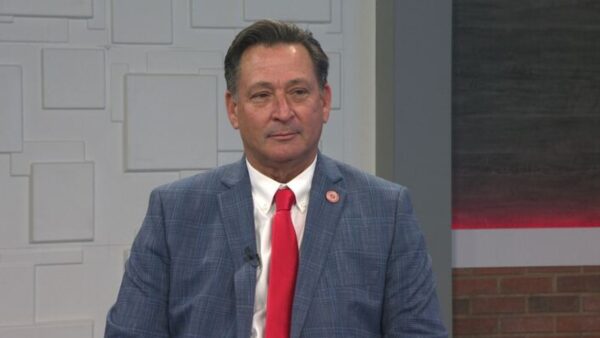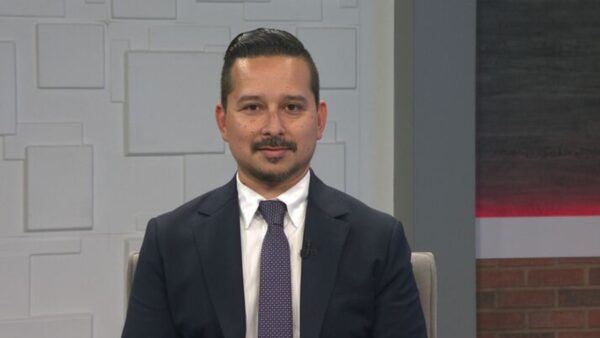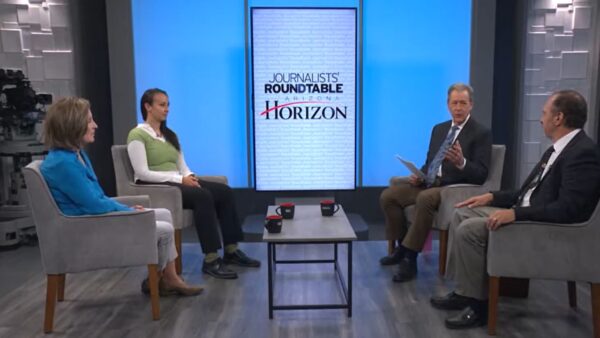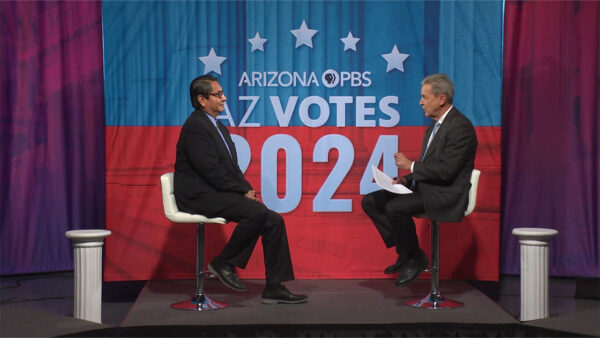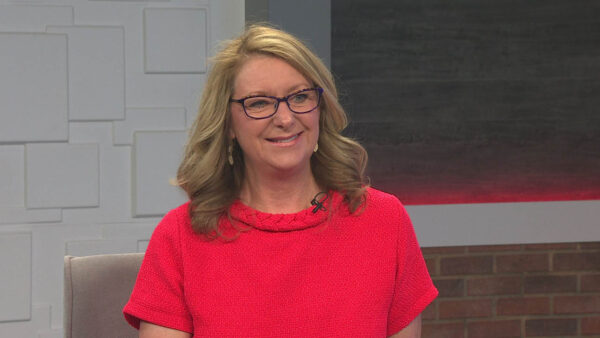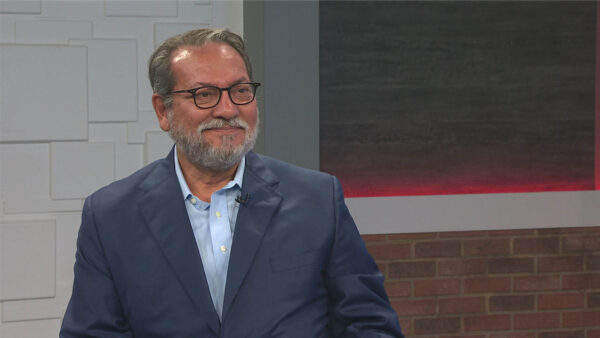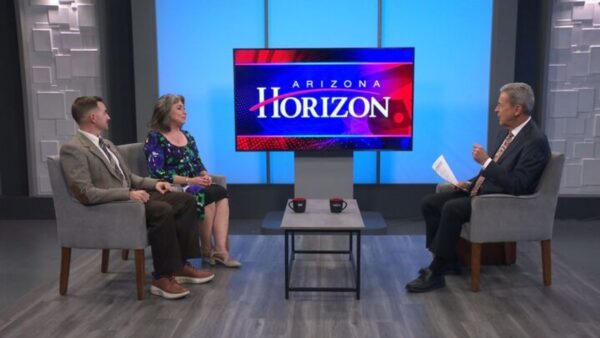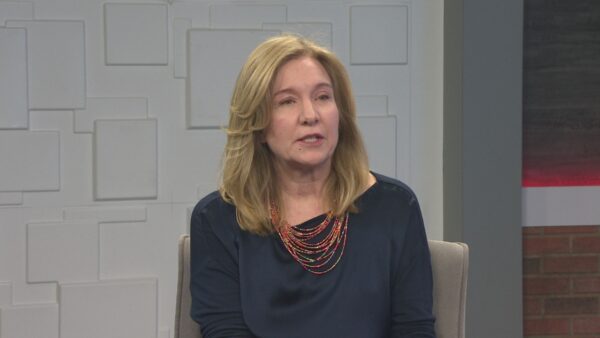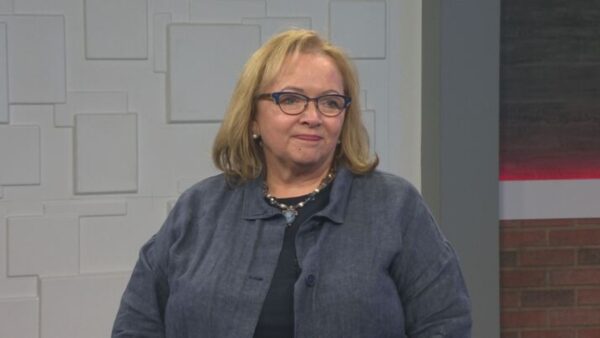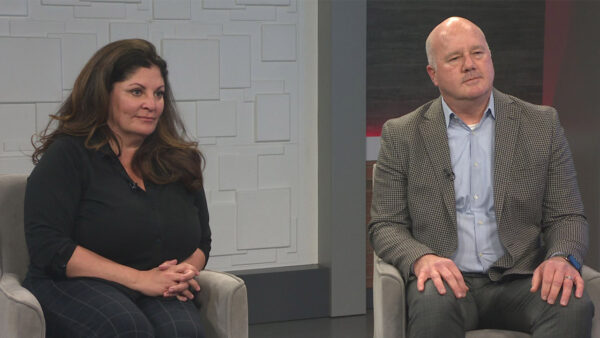Scott Baxter spent much of the last decade driving across Arizona to photograph 100 ranchers whose families have been ranching in Arizona since 1912 or earlier. Hear what Baxter has to say about this ambitious project and see how he goes about his work as we tag along on one of his shoots in southern Arizona.
Ted Simons: Ranching is a big part of Arizona's past but some are concerned it may not have much role in the state's future. Concern that the ranching way of life is disappearing photographer Scott Baxter set out to make a permanent record of 100 ranchers from families that have been ranching in Arizona for 100 years or more. I spoke with Baxter near the ends of his decade long journey to complete this ambitious project.
Ted Simons: First we tag along as Baxter photographs ranchers in southern Arizona. [dog barking] [cattle mooing]
Scott Baxter: Some of these ranches that we're photographing aren't going to be around because development is going to fight its way in. There's a lot of ranches there's no one coming up behind them so they will most likely be sold. I just thought, what if photographicly I could at least try to record some of the families that have been around here since 1912 or earlier? I didn't really plan to do anything with TI just wanted for see if I -- to see if I could accomplish it. We call it 100 years, 100 ranchers. Basically the criteria is the family has been ranching in Arizona continuously since 1912 or earlier.
Henry Amado: My ancestors came here from Valencia, Spain, in the 1840s. They were coming to Tucson by covered wagon.
Henry Amado: This is the Amado family. My great-grandfather.
Henry Amado: About 1852 is when he set up the ranch in what is called Amado.
Scott Baxter: This family is very historic family. Goes back a long ways. A beautiful ranch too. One of my Santa Cruz is probably one of my favorite places to be in the whole state. Photographs should be really easy for you to look at. Doesn't mean it has to be Pollyanaish or beautiful. It just has to be easy. If it's easy it's good. Henry, just right in the middle -- if I really try too hard to push a photograph it just doesn't work out for me. I kind of let the photograph come to me. There's not a set process.
Scott Baxter: I want to get this brand on the horse's shoulder.
Scott Baxter: Aside from scouting the day before knowing I wanted to use that big sycamore tree, I don't have like a list of what I'm going to do. I just walk in and it's the way I have always worked. I just wing it. Kind of works for me. Doesn't work for everybody, but it works for me.
Scott Baxter: Perfect, guys. Okay.
Scott Baxter: The last one with this camera for now at least.
Henry Amado: I was standing there --
Scott Baxter: Straight in.
Henry Amado: Last evening by the tree between two horses with my son and grandson on each side of me. Very proud.
Scott Baxter: Just gives you an idea, a small shot. You have to kind of look at it you want to show that pride. As a group they are very proud of their heritage, very proud of what they do.
Scott Baxter: That's where we're at. We're going to shoot a few more with this camera.
Scott Baxter: With the portraits you take a little more time, get your frame up the way you want it, you read your light and you shoot it.
Henry Amado: I think it's a wonderful thing that Scott came up with, this idea.
Scott Baxter: This is actually very nice where we're at now.
Henry Amado: It's recorded history.
Scott Baxter: I don't think they are really looking for recognition. I think they like the fact that there's going to be a record of this somewhere for their kids. For future generations. For me, forget about the pictures. It's the experience to travel around the state. I usually get into a ranch and back about three and a half hours each way. It's a lot of miles. I like driving. I get to see a lot of the state.
Scott Baxter: I treated this in a lot of ways just like it could have been shot, you know, 100 years ago. I bring a digital with me just to shoot stuff for them. We're shooting straight black and white film, no lights. Basically camera film and a tripod. That forces know really think about my composition a lot because I don't have a lot of tricks in my bag. It makes you think more as a photographer. I like to get the cattle into the two corrals.
Henry Amado: We were doing the spring roundup, which means bringing the cattle in from the pastures, bringing them into the corral. [cattle mooing] Starting off with the baby calves.
Henry Amado: Separating the bigger steers because we're going to sell them.
Henry Amado: I don't know of any rancher that doesn't work hard. We have to. No, I don't have to do this. I have always been a very successful CPA, and with my son as my partner, the business is still going. And maybe that's why I can afford to be here. Because I don't have to be at the office, but I enjoy being here. At my age I deserve to be here. I think it's love of the ranch, love of the land.
Scott Baxter: The brandings can be kind of exciting. Got two guys roping and dragging calves and three or four cowboys throwing calves on the ground. Sometimes with the action stuff I don't have time to do too much but just kind of -- hang in there. You don't want to be the cause of somebody getting hurt. You don't want to be the cause of livestock getting injured and you certainly don't want to get hurt yourself. You stay dialed into the frame but you certainly have to have a few things going on in your head, keep yourself cognizant of really what's going on around you.
Scott Baxter: And I've learned a lot. I wasn't aware I was actually going to brand a calf yesterday. It was wonderful to me and for me an honor that Henry asked me to give it a shot.
Henry Amado: Rock it back.
Henry Amado: I was surprised Scott had not had that experience.
Henry Amado: That's enough. Beautiful.
Scott Baxter: Thank you, Henry.
Henry Amado: When we branded the first calf he kind of got a happy smile. Now you're going to learn to castrate a calf. And he did one. So he's an expert now. [laughter]
Scott Baxter: This one is a little bit more -- this was like the old style. [laughter] Yeah.
Scott Baxter: I have not had a bad experience, and I've got a story for every single ranch I have been at.
Scott Baxter: That's perfect right there. Hold that.
Scott Baxter: The photographs are kind of the icing on the cake, but the real thing is I just --
Scott Baxter: Thank you, sir.
Scott Baxter: That's it.
Scott Baxter: They are a great group of people.
Mrs. Amado: I like Henry sharing the history of the family.
Scott Baxter: I have just been real honored to have the opportunity to meet them and spend some time with them.
Henry Amado: The cattle business is okay. It's going to keep going. For example this ranch is not for sale. It will continue.
Henry Amado: Look more out for me.
Henry Amado: There will be somebody here, one of the kids, maybe son-in-law, grandson. Who knows? But they will keep it going.
Scott Baxter: They are all hard working people who just like -- they love what they do. They really love the land. I mean, that's the thing I have come away with. They really love this land and they really want to take care of it.
Ted Simons: Here now to talk about 100 years, 100 ranchers, which by the way has been designated an official state centennial legacy project, is photographer Scott Baxter. Good to have you here. Thanks for joining us.
Scott Baxter: Thank you, Ted.
Ted Simons: Why ranchers?
Scott Baxter: At the "X"-diamond ranch I met Wink Krigler, the granddaughter. I spent time with wink. She has a museum and my B.A. is in history. We struck up a friendship. By spending time with her and her sister and another rancher up there, Sam Udall, I got the feeling that this thing was changing. This was a tenuous tradition. I just came up with the idea probably around 2000, 2001. I have been working on it since '99 but just came up with the idea, said what if I try to shoot 100 of them?
Ted Simons: Did you know it would lead to this many years, this much work, this much travel? Did you know that in the beginning?
Scott Baxter: No. Bob Barrett, a rancher at the love lake ranch, I met him at a cattle growers meeting that I spoke at. He came up to me and said, Scott, I bet you thought this was a lot of fun taking pictures. It kind of took on a life of its own. It's been a great trip.
Ted Simons: Did you find yourself ever getting in the way? Worried about getting in the way?
Scott Baxter: Not really. In the video piece I spoke about when you're at branding and stuffer and there's a lot of action. I ask a lot of questions, make sure I'm not in the way. They are usually really good with me, Scott, come over here, stand here. I'm real cognizant not to screw things up for them.
Ted Simons: In the video you talked about how you look at a shot, a photograph. I'm always very interested in whether or not you saw the Sycamore tree and you said that's a photograph, or -- did you not know that that was going to be a winner until you had them stand next to it? Do you see it in your mind's eye or through the lens and go, that's it?
Scott Baxter: The process here is people ask me that a lot, I never know what I'm going to do when I walk into a ranch. I go in with an open mind. I look around, I get my ideas, but for me it's more of an emotional thing.
Ted Simons: Did you know that those hands had to be a photograph or did you find those hands and go, that's it?
Scott Baxter: I was -- we were waiting to go gather cattle outside of Winslow. This is Jim Ohaco, these are his hands. I was talking with him and his ranch manager, shooting portraits of them. When I looked at them, it's not rocket science.
Ted Simons: You know it when you see it.
Scott Baxter: Exactly.
Ted Simons: You said, another photograph here, it's got great line in the video, it's got to be an easy thing to look at.
Scott Baxter: This is probably one of my favorite photographs that I took. This is a great example of what you're asking. A friend of mine said, this is what there is, there are quiet moments before you shoot and after you're done that sometimes provide a great image. This was one I was done. Hi four frames left. I had always wanted that treat in it, I couldn't get it in. We were done. That's John Hayes, a state legislator, speaking with his daughter. I just picked it up, it was the end of the day, four frames, I didn't have any more film. That was it
Ted Simons: That's something. Black and white. Large format. Why?
Scott Baxter: Well, black and white, everything from six by six centimeter up to eight by ten negative. For the large format stuff it allows me to slow down when I'm doing a portrait, dial in sometimes people will slow down too. They will look at the camera and you can converse with them. You don't have to look at the camera like a 35. You can frame it up, stand to the side and speak with them a little bit.
Ted Simons: As far as the texture of black and white, THESE are just gorgeous.
Scott Baxter: Like I was saying it's hard to explain but there's a depth to a black and white photograph I don't feel you get in a digital photograph.
Ted Simons: What's next for you?
Scott Baxter: Project-wise, I kind of dove tailed off this project and I'm just beginning it. I shot a few tests. Tentatively it's called top hand, but I want to do a cowboy project. But not rodeo cowboys. I want to do working ranch cowboys. I have -- I have met some. It may not be just Arizona. It may be throughout the west. I have kind of started it. That's my next goal to work on that.
Ted Simons: Are you concerned about the future of ranching in Arizona?
Scott Baxter: Yes. It's a very -- a lot of my fourth generation ranchers are the last ones in a lot of cases. There are a lot of them, we have some great young ranchers, but a lot of the fourth generation ranchers, the quote is the work is too hard and you can't make enough money.
Ted Simons: You've done great work here. Congratulations. Best of luck to you.
Scott Baxter: Thank you.
Scott Baxter:Photographer, 100 Years 100 Ranchers;
